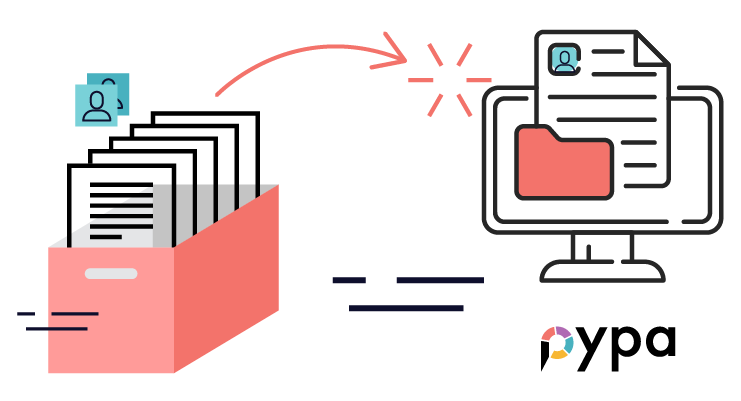
With remote work on the rise, candidates now have more options, while employers strive to gain high potential talent. As the market becomes challenging, employers need to revamp their recruitment approach and build it on the basics of employee retention and purpose-driven opportunities.
The real reason behind this dry spell of hiring desirable talent is the vast opportunities that candidates now have, thanks to remote work. You don’t need the pandemic to remind you how ‘work’ has changed, and ‘meaningful work’ isn’t the same anymore. Thanks to Zoom recruitment, businesses worldwide can access new local markets for recruiting talent, creating shockwaves through the trade. In the day and age where the flexibility to ‘take the dog out for a walk’ is preferred as a perk over slightly more compensation, the entire industry has to re-evaluate its hiring strategy and realize the reasons to get its employees to stay.
The history of hiring and recruitment has taught us that the more scant the resources are, the more demand will come flocking. Today, when companies across the world are hiring like wildfires, 72% of talent acquisition leaders are looking for experienced professionals outside their organization for existing open positions because of a possible lack of internal development of in-house employees. Now, it may not seem much on the surface, but this approach to hiring is like throwing a wrench into the engine, stalling the process.
Once the internal employees have less personal growth leading to fewer promotion opportunities, retaining them is difficult. And this is where things run haywire, as employers keep hiring for the positions that the existing employees are leaving. Today, employees are quick to realize their expectations from their jobs, and no more are they chasing their performance rating the most. Instead, they want to be in a workplace that gives them career advancement (one of the most common reasons for seeking a position elsewhere) and helps them be the next promising version of themselves.
Furthermore, even with competitive remuneration, people no longer find longer working hours feasible. Tech talent, for example, is suffering a massive shortage of skilled professionals as they’re quickly snatched off the market, sometimes by the highest-bidding competitors or companies with good ideals.
Now that we have a clearer picture of the bottleneck issues, here are some of the simple ways in which companies can change their approach to the recruitment process:
Employers must understand that their employees are always looking for a new scope of growth and learning to advance in their careers. If that doesn’t concern them, it can further aggravate their hiring & recruitment issues, as the employees eventually switch to other options that give good learning programs or decide to quit their jobs to enroll in higher studies once they save up adequately. Employee attrition can be taken care of with the retentive pace of skill development, training, and higher study programs, carefully designed by employers that will coach new managers, supervisors, and others within an organization.
Yes, it is one of the oldest tricks in the textbook. Still, it is when employers realize the potential of their already-existing workforce before hiring an experienced professional from the outside. This may not work out for cross-vertical/cross-department hiring in an organization, but it can work for mid-senior/senior employees to move up in their careers while growing in their work to handle bigger responsibilities.
Employers are often penny-wise but pound-fools when considering external hiring as the only option for any new position. However, unless the company is among the Big 5 in Silicon Valley, spending valuable time, effort, and cost for numerous new hires who could take up to 3 years to perform their best—all this while having potential internal candidates, can quickly get the employer on its feet, especially in today’s market.
Professionals have embraced work into their lives and are evaluating their options based on how easily it fits into their everyday lifestyles. Therefore, targeting only compensation, flexibility, and other generic perks that almost all companies provide won’t cut the chase. Instead, employees choose opportunities where they can be driven by mission and are willing to join businesses that share a common belief, irrespective of having larger offers at hand.
For employers, the right first impression in the candidate’s market goes a long way, irrespective of the outcome. This is where genuine curiosity about the candidate’s experience, completed projects, possible contributions to the company, etc., can be a deciding factor to keep them engaged right from the start.
For some employers, in-house employee referrals are a great way to find the best-performing candidates, while for others, it could be through other recruitment channels such as LinkedIn. The only way to know what’s working best for you as an employer is to measure. Measuring and monitoring employees’ performance, recruitment process, and sources can take care of any blindsides your recruitment process may have and constantly improve it.
People call this the ‘era of candidate’s market’, but the reality in this fast-paced world is always changing. Today when candidates value meaningful positions over competitive CTCs, employers are competing over providing a sense of purpose to candidates within the scope of their work in the open positions. And a deep understanding of purpose keeps employees engaged and motivated to generate value and be quality hires, and it doesn’t have to stop there. To keep up with an effective recruitment pipeline, processes such as applicant tracking, performance evaluation, candidate management, and workflow management need to be carried out exhaustively—all of which are among the many features of our applicant tracking and staffing software, PYPA Hire. So register today, and stay on top of your recruiting game!

A good recruitment process is key to hiring top talent. It may seem quite complicated to create a...

Employer branding can help improve your hiring, your employee retention and your sales. Therefore,...

Employee records are something that all businesses, whether big or small, need to keep, sometimes...